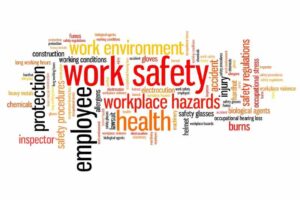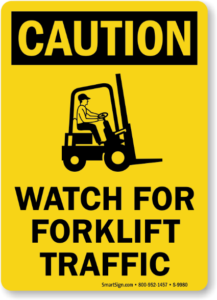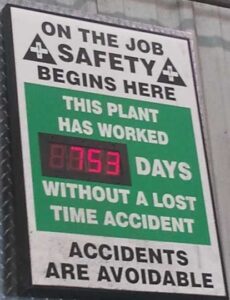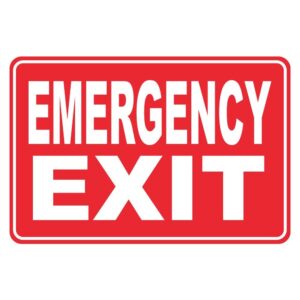25 Jul Managing Workplace Health and Safety
Better to be safe than sorry! Business owners should always take the health and safety of their employees seriously. There’s lot of information out there to help you have a safe and healthy workplace. From testing your health and safety procedures to preparing a checklist of all potential hazards and risks, there are several steps that you may take as a business owner to best manage the health and safety of employees in the workplace.

Why is Workplace Safety So Important?
When a company provides a safe work environment, they are protecting themselves, their employees and their customers. It is important to follow guidelines and procedures to remain compliant with local and national occupational safety authorities. A safe workplace is a happy workplace, as it creates a more comfortable and conducive environment for employees to effectively do their jobs.
Who’s in Charge of Your Health and Safety Program
In some organizations, it is the Human Resources department that is in charge of making sure safe workplace standards are being met. Other companies may not have a HR representative, and in that case, management and supervisors would ensure the workplace is kept safe. However, in reality, it is the responsibility of everyone to create and maintain a safe and functional work environment.
Establish a Policy
Establishing a health and safety policy is the first step a small business owner should take to manage the well-being of their workers. A lot of small businesses don’t have large administrative departments to consider the approach and examine workplace safety from a legal or ethical perspective. The responsibility ultimately falls on a compact management team to oversee the administrative functions of a small business, and this includes outlining workplace safety policies. Owners and operators of small businesses should establish their safety policy in a document that can be easily disseminated to their workforce and referred to at any time. This is a reasonable first step in managing a small business’s workplace health and safety.

Health & Safety Training
The best way to avoid a health and safety incident is to ensure every employee has health and safety training. There are companies out there that offer a variety of training courses to teach workers about health and safety protocols in the workplace. Use these courses to ensure your workforce follows the necessary procedures. Employees need to know how to act in the event of an emergency so that a safety incident doesn’t grow to be worse and also, to protect others. Furthermore, health and safety training should be something updated annually, ensuring everyone is fully abreast of safety expectations.
Health & Safety Meetings
An open dialogue is something every employer wants to have with their workforce. A regular safety meeting is important to getting hazards reported, identifying potential concerns, and prioritizing safety. In a meeting, you can also review health and safety standards, and communicate to workers the importance of safety. It may seem like being over-prepared or like it’s too much, but when it comes to maintaining safety, these meetings can be kind reminders that save someone a career-ending injury or worse.
Health & Safety Protocols
Health and safety procedures are crafted to be a certain way. No one should be taking shortcuts. That goes for both the employer and employee. You can still work safely and be efficient. Shortcuts have no place in a high-risk work setting. The reason why a lot of people rush or compromise their health and safety is because the standards for performance are too high. Creating unrealistic expectations for work is something many employers are guilty of. When it finally leads to an injury, this emphasizes the importance of why performance standards must be set at the right level.
Make Health and Safety Part of The Business Culture
The best way to manage workplace health and safety for small business owners is to make it a part of their business culture. Health and safety should always be central in the business’ culture. The easiest way to accomplish this is to start slowly. Define responsibilities, develop a health and safety system that works, involve employees of all levels, and hold everyone accountable. I also believe that small business owners should commit to continual growth and expansion when managing workplace health and safety.

Keep Emergency Exits Clear
You need to be able to access the exits quickly and easily when an emergency occurs. Equipment shutoff access should be kept clear as well, in case you need to quickly shut them down.

Health and Safety Tips for Every Boss and Employee
- Use tools, equipment and machinery properly. Proper use of tools and machinery can prevent injuries. Do not attempt use of a machine that you are not properly trained to use.
- Report any unsafe conditions. See something, say something. Report any unsafe conditions or workplace hazards as soon as you notice them.
- Wear all necessary safety gear. Always wear the necessary safety equipment.
- Keep your workplace clear from clutter. Having a clean workspace will positively impact your job satisfaction and keep you and your coworkers free from danger.
- Stay hydrated. Drink enough water to remain alert and avoid dehydration.
- Practice good posture when sitting or lifting. Use ergonomic desks and keyboards to avoid straining your wrists and arms.
- Be aware of your surroundings.
- Never take shortcuts. There is never a good reason to take a shortcut to save time. Procedures exist to keep you safe. Though skipping a step or not wearing proper safety equipment may save you time, it isn’t worth getting injured over. Use every tool and machine according to the directions.

Conclusion
Take pride in your company’s work environment and enforce your health and safety policy. Not only will your employees feel better about their workplace, this will help boost morale and encourage employees to work smarter while working safer.

Sorry, the comment form is closed at this time.